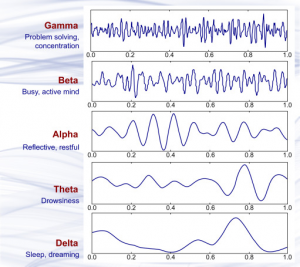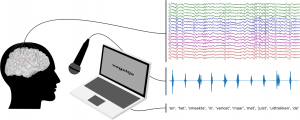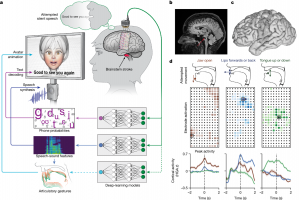
With the increasing complexity of the data we can obtain from behaving systems, among which Homo sapiens, as a species, tends to be one of the most well studied, machine learning pipelines have now become routine for both predicting behavior by decoding physiological signals and the opposite – detecting functional abnormalities (disease) based on subtle behavioral changes. Initially having stemmed from the intersection of biomedical engineering, neuroscience, medicine and psychology, neurotechnology has emerged as a distinct field dedicated to developing advanced computational methods for achieving the above two purposes. Often, methods used for recording some kind of physiological data from the brain and translating them into some kind of output, be that generating speech, moving a controllable robotic arm, diagnosing a subtle brain disease or playing a VR game, are called brain-computer interfaces (BCI).
At the core of BCI/neurotechnology lies the automatization of the complex data analysis that was made feasible due to the development of faster computers and better unsupervised learning algorithms. Imagine that a brain scientists needed to identify different brain activity patterns associated with the states of the brain wakefulness. Many might recognize an exemplary classical chart of different wave forms that can be detected at different brain states, including focused problem solving through sleep.

Adapted from: Priyanka A. Abhang, Bharti W. Gawali, Suresh C. Mehrotra “Introduction to EEG- and Speech-Based Emotion Recognition.” Chapter 2.1.1, pages 19-50.
Decoding these patterns would not be too difficult without lots of prior training or understanding the fundamental brain physiology. However, if the signals to be decoded were subtle and there were too many of them, how would the massive amount of data be processed? For example, the data recorded from the brain during a simple task of speaking could like this:

Adapted from: Verwoert M, Ottenhoff MC, Goulis S, Colon AJ, Wagner L, Tousseyn S, Van Dijk JP, Kubben PL, Herff C. Dataset of speech production in intracranial electroencephalography. Scientific data. 2022 Jul 22;9(1):434.
Obviously, the number of features in such dynamically changing data set is too high for a human to decode words based on viewing the activity.
Neurotechnology, as an area, is, therefore, preoccupied with developing better hardware allowing to obtain high quality signal, better computers and artificial intelligence algorithms that enable fast and reliable decoding of big data obtained from the brain. For example, such can be used in certain patients living with disabilities to convert otherwise non-manifestable brain activity into words or even a virtual avatar, displaying emotions and typical human behavior features of choice.

Adapted from: Metzger, S.L., Littlejohn, K.T., Silva, A.B., Moses, D.A., Seaton, M.P., Wang, R., Dougherty, M.E., Liu, J.R., Wu, P., Berger, M.A. and Zhuravleva, I., 2023. A high-performance neuroprosthesis for speech decoding and avatar control. Nature, 620(7976), pp.1037-1046.
While development of neurotechnology has a potential to help many patients living with disability as means for communication and regaining functional capacity with help of adaptable prostheses, it also raises reasonable concerns with regards to bioethics, data privacy and reliability of the automated brain signal interpretation. With brain being an adaptable organ that is plastic, changing, yet reliant on both external feedback and execution, the complexity of interaction between the brain and computer should be studied more closely. “Cybiosis” is a neologism that is sometimes used to describe the philosophical complexity of such interaction in the context of an ambivalent co-relation and commodification that establish as a behaving system may enter a relationship with an external computational system. Common frameworks will have to be established across subdisciplines of neurotechnology (using the power of thought to play video games vs controllable protheses) to elucidate the limits of such commodification that would be ethically acceptable for the society and address the ambiguous sentiment that may exist about cybiosis.
Header image by rawpixel.com on Freepik










